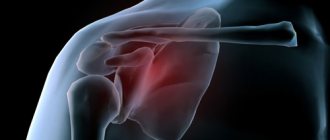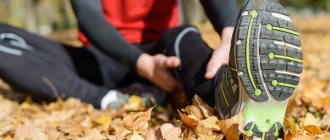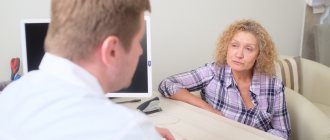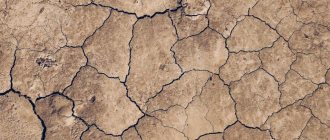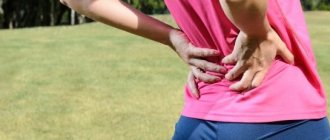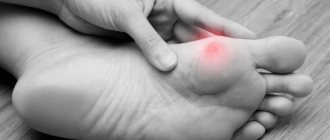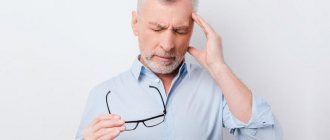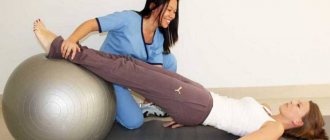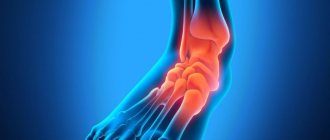Lower back pain is often referred to by terms such as lumbago or lumbodynia. Lumbago or “lumbago” is an attack of acute pain in the lower back, which is usually associated with hypothermia and stress. Lumbago occurs in many people and is often the cause of temporary disability. Often the cause of lumbago can be sports injuries or sprains, but sometimes the factor that triggers the pain remains unknown. Lumbago is characterized by pain without radiating to the legs. Low back pain (lumbago) may appear acutely and gradually progress throughout the day. Stiffness often occurs in the morning and gradually the stiffness turns into pain. Curvature of the spine (antalgic scoliosis) as a result of muscle spasm is also possible. The pain itself can be caused by muscle spasm, which in turn is associated with other causes. This could be overuse or sprained ligaments, sports injuries, herniated discs, spondyloarthrosis (spondylosis), kidney disease (infections or kidney stones). Sometimes the patient accurately determines the cause-and-effect relationship between the onset of malaise and stress, hypothermia, but often the pain appears without obvious reasons. Sometimes lower back pain can appear even after sneezing, bending over, or when putting on shoes. This can be caused by deforming diseases of the spine, such as scoliosis.
Unlike lumbago, the term lumbodynia refers to pain that is not acute, but subacute or chronic. As a rule, pain with lumbodynia appears gradually over several days. Pain may also occur in the morning and may decrease with physical activity. Lumbodynia is characterized by increased pain during prolonged static loads (sitting, awkward body position). It is also characteristic of lumbodynia that the pain decreases when lying down in a certain position. Patients with lumbodynia have difficulty performing normal activities such as washing or putting on shoes due to muscle spasms. Due to the disease, there is a decrease in the range of movements of the body (bending forward or, to a lesser extent, bending to the side or extension). Due to pain, the patient often has to change position when it is necessary to sit or stand. Unlike lumbago, muscle spasm is less pronounced and, as a rule, does not cover the entire lower back, and there are often signs of spasm predominance on one side.
Types of lower back pain
Understanding the nature of the pain is very important, because this will help the doctor immediately make an assumption about the diagnosis and prescribe a more accurate diagnosis.
Pain happens:
- acute (occurs due to recent damage, lasts up to 1.5 months);
- aching;
- blunt;
- strong and long lasting;
- subacute (lasts 6-12 weeks);
- variable (transitory);
- chronic (lasts more than 12 weeks).
Low back pain is also divided into primary and secondary.
Primary
associated with chronic changes in the tissues of the spine and muscles. Sometimes the spinal roots are involved in the process.
Secondary
pain indicates another disease. This could be arthrosis, arthritis, or some pathology of the internal organs.
Why does my back hurt?
This may be associated with diseases of the internal organs, spinal trauma (including fracture), neurological pain usually indicates osteochondrosis, and sometimes it is a symptom of gastrointestinal pathology, kidney stones, etc.
In addition, the back is somewhat prone to injury and pain. The spine performs at least 4 functions: supporting, protective, shock-absorbing and motor. Therefore, if pain appears, it may be a consequence of poor posture, strong one-time load, sudden movement or turn.
What to do if you have back pain?
See a doctor and get examined. Based on the diagnosis, it will become clear how to cure back pain, depending on its root cause.
Which doctor should I consult for pain in the lumbar region?
Usually, you first need to contact a therapist, who will already give a referral to a specialist - a neurologist, traumatologist, rheumatologist, or osteopath.
If you are sure that you know exactly the origin of the pain, you can contact a specific doctor directly. For example, if you recently had a bad fall, then you need to see a traumatologist.
Our clinic has a manual therapy department in St. Petersburg, where you can make an appointment with the right doctor for consultation or treatment.
How is diagnosis and examination done by a doctor?
First of all, the doctor must exclude conditions that are life-threatening. For this purpose, clinical and biochemical blood tests are performed. They make it possible to detect inflammatory processes and excess calcium, which is typical for cancer that has metastasized to the bones. Tests also detect multiple myeloma and many other pathologies.
A man over 50 years old may have a prostate-specific antigen test to rule out prostate cancer.
X-rays are required to determine the height of the intervertebral discs and identify osteophytes, if any. The latter are bone tissue growths that appear due to improperly distributed load on the vertebrae and changes in their shape.
MRI and CT are needed to determine whether there is a bulging intervertebral disc, calcifications, or spinal stenosis. Similar changes can be seen on ultrasound, which is increasingly being prescribed instead of CT, as it does not provide radiation exposure.
The patient must consult a neurologist and, if necessary, a chiropractor.
When the examination is completed, the doctor can accurately diagnose and determine treatment tactics. The success of therapy increases tenfold with early treatment.
Our clinic address: St. Petersburg, st. Bolshaya Raznochinnaya, 27 metro station Chkalovskaya
Diagnostics
Primary diagnosis is carried out by a traumatologist-orthopedist. If there are neurological symptoms, the patient is examined by a neurologist. The doctor interviews the patient and carries out an objective examination. According to indications, consultations with a surgeon, rheumatologist, urologist, and other specialists are prescribed. The diagnostic program may include:
- Neurological examination.
During the examination, the specialist evaluates reflexes, muscle strength, coordination of movements, deep and superficial sensitivity. - X-ray.
X-rays of the lumbar region show fractures, decreased height of intervertebral discs, other degenerative changes, space-occupying formations, signs of inflammatory processes, and spondylolisthesis. If necessary, standard radiographs are supplemented with functional studies. - Other neuroimaging techniques
. MRI is also used to clarify radiographic data. When performing a computed tomography, the structure of hard structures is studied in detail, and the condition of ligaments and intervertebral discs is examined using MRI. To exclude stenosis, myelography is performed. - Functional Research
. The condition of muscles and nerve conduction is assessed using electromyography, electroneurography, and evoked potential studies. - Lab tests
. To confirm the infectious nature of the disease and determine the pathogen, blood tests and microbiological examinations are performed. Serological tests are used to detect neuroinfections.
According to indications, ultrasound of the kidneys, prostate, pelvic organs, urine tests, ultrasound of the abdominal aorta, and other studies are performed.
Manual therapy
How to cure lower back pain: basic treatment methods
Treatment for the lower back depends on the cause of the pain. What helps in one case may not be effective in another. Let's look at the main types of therapy and ways to relieve pain at home.
Conservative treatment
Conservative therapy is rarely prescribed independently. Usually it complements medication.
Conservative methods primarily include physiotherapy. This can be manual therapy, classical or therapeutic massage, acupuncture. To relieve muscle spasms and restore blood flow, cupping massage with bloodletting at certain trigger points is often prescribed.
Sometimes doctors prescribe herbal treatment that improves blood circulation in the spine where spasms occur.
Kinesitherapy is becoming more and more popular. This is a special gymnastics that needs to be done on decompression machines. Such devices allow you to relieve overstrained muscles and form correct motor stereotypes in a person.
Medications
In most cases, back pain is not health threatening and can be overcome by taking certain medications and using ointments.
First of all, patients are shown non-steroidal anti-inflammatory tablets - Ibuprofen, Ketoprofen, Piroxicam, Nimesulide, Diclofenac. These are good pain relievers that also relieve inflammation.
You can also give injections for pain. One of the effective drugs for pain relief is Baralgin. This is a proven and good remedy to quickly relieve pain caused by spasms. The drug is available in ampoules, is a non-narcotic pain reliever and can relieve even very severe pain.
Where is Baralgin injected?
In a hospital setting, the drug can be administered intravenously. This is how it works faster and more efficiently.
At home you can inject it intramuscularly - into the buttock. Visually divide the buttock into four segments by drawing two lines - horizontally and vertically in the middle. The injection should be given in the upper right part (for the right buttock). With one confident movement, you need to insert the needle to its entire length and then inject the drug by pressing the syringe. The medicine should be administered moderately quickly. Before the injection, be sure to disinfect the skin, and afterward, apply a cotton swab soaked in antiseptic for about 5 minutes.
Important!
We do not recommend self-medication. Before using any medications, be sure to consult your doctor!
Let's return to drug treatment methods. In some cases, hormonal medications are prescribed to reduce swelling and pain. They act faster than non-steroidal anti-inflammatory drugs. They are administered under medical supervision or strictly according to the prescribed regimen. At home, you can give intramuscular injections or take the prescribed drug in tablets. In the hospital, IVs are usually placed.
Hormonal drugs are also used for therapeutic blockades, that is, they are injected directly into the source of pain. The main drugs in this group are Prednisolone and Dexamethasone.
Many commercials position ointments and gels as the most effective means of combating pain. However, in fact, this method of introducing the active substance into the body is considered the most ineffective, because most of the drug does not even pass through the skin.
How to quickly get rid of pain without drugs and at home
You won’t be able to get rid of pain in a minute, but in 5-10 it’s quite possible. To do this, you need to do an exercise aimed at relieving muscle spasm and relaxing the lumbar region.
We offer two options:
Exercise one
- Starting position: kneeling.
- The right leg should be bent at a right angle, it should stand in front. With your left foot, place your knee on the floor.
- In this position you need to find balance and fixate.
- When you succeed, reach back with your left hand and grab your left foot.
- After this, pull your left leg by the heel to the pelvis. The thigh muscles should be well stretched. You can enhance the effect by squeezing your left buttock.
- Stay in this position for half a minute, then slowly and carefully lower your left leg, returning to the starting position.
- After this, do the exercise for your right leg.
Exercise two (you will need a massage roller)
- Lie on your back with a massage roller under your sacrum. Important: do not place the roller under your spine under any circumstances.
- Gently pull your right knee toward your chest. The left heel should touch the floor. At this moment, you will feel the anterior thigh muscle stretch.
- To increase muscle tension, place your left hand behind your head and turn your bent knee slightly to the right.
- Hold this position for half a minute.
- Repeat the exercise for the other leg.
Other home remedies for lower back pain
If the pain is caused by swelling, a dry cold compress can help. Take ice or something frozen from the freezer, put it in a bag and wrap it in a cloth. Apply to the lower back for 20 minutes for two days. You can repeat every two hours.
If the pain does not go away from the cold, then after two days you can try warm compresses. They increase blood circulation in the lower back and relieve pain by interrupting pain signals from nerve endings to the brain. It is best to use an electric heating pad for this. If you don't have it, a regular one will do. You can also simply take a warm bath.
Symptoms that accompany back pain
The clinical picture of spinal pain depends on the location:
| Cervical spine | Thoracic spine | Lumbar spine |
| Headaches and dizziness | Burning in the chest | Change in the number of urinations |
| Numbness and weakness of the hands down to the fingertips | Difficulty in inhaling/exhaling | Numbness and weakness of the lower extremities, including the buttocks and toes |
| Blood pressure surges | Feeling of tightness in the chest | Low sensitivity during bowel movements |
| Floaters and flashes in the eyes | Pain between and under the shoulder blades | Erectile dysfunction and decreased libido |
What diseases may cause lower back pain?
Ankylosing spondylitis
This disease develops gradually. At first, mild pain appears in the lower back, then it intensifies and spreads to other parts of the spine. The pain may occur sporadically, but most often it is constant and decreases only as long as the pain medication is in effect.
Features of the nature of pain:
- worsens at rest, especially in the morning and in the second half of the night in a horizontal position;
- accompanied by stiffness of movements;
- goes away or decreases after charging;
- goes away quickly after taking a non-steroidal anti-inflammatory drug.
Sometimes the pain is very weak or not at all, and the only symptom is a decrease in the mobility of the spine, which spreads from the bottom up. Some patients also have pain in their shoulders and their mobility is limited. It happens that the joints of the legs and arms swell and hurt.
Hernia and osteochondrosis
These diseases have similar symptoms and depend on each other, so we will look at them together.
With lumbar osteochondrosis, the pain is severe because the nerve roots are mechanically irritated. In addition, when the membranes and septa of the intervertebral disc rupture, substances enter the bloodstream that irritate pain receptors.
At the late stage of osteochondrosis, the intervertebral discs bulge and a hernia forms. The lower back is most often affected because the openings between the fourth and fifth lumbar vertebrae and between the fifth vertebra and the sacrum are the narrowest, but the nerve roots that pass through them are the most massive. The patient feels severe pain, similar to radiculitis. If the hernia is massive, it begins to put pressure on the spinal cord, which leads to decreased sensitivity in the legs and even paralysis.
Characteristic signs of a hernia:
- it is impossible to stand up without leaning on a chair or knee, because the load on the disc responds with a severe attack of pain;
- You can’t lie on your stomach just like that, but only with a pillow;
- It is impossible to bend down to pick something up from the floor, but to do this you need to carefully squat.
Kyphosis and scoliosis
In the early stages there is no pain. You may feel very tired in your back muscles, and in the evening you really want to go to bed as soon as possible. At the second stage, neurological disorders appear:
- hands go numb;
- shoulders and forearms weaken;
- My back starts to hurt a lot.
Spondyloarthrosis
At the same time, spondylosis develops. When it occurs, the cartilage of the intervertebral disc is destroyed, and bone protrusions grow around the altered disc. This can lead to a narrowing of the spinal canal and compression of the spinal cord, which causes the legs to go numb or even paralyzed, and the function of the pelvic organs is disrupted.
Main symptoms:
- lower back pain, which in rare cases radiates to the thigh closer to the hip joint;
- reduction of pain after rest or cessation of exercise;
- soreness and tension in the lower back muscles;
- limitation of spinal mobility.
The pain intensifies while standing and walking, there is a feeling of heaviness and stiffness in the lower back in the morning. Usually, stiffness and heaviness go away after morning exercises.
The pain is moderate and can become chronic. This is due to constant irritation of the nerve roots and nerves.
Protrusions
Protrusions occur where mobility, and therefore wear, is highest. Therefore, the lower back is most often affected.
The symptoms are mild for a long time, so people do not even suspect that this is not ordinary fatigue, but a serious diagnosis. However, then the manifestations intensify:
- discomfort in the lower back gradually turns into pain, which becomes stronger and occurs more often, it hurts a person to move, the pain radiates to the legs and eventually spreads to them;
- pain in the legs spreads to the buttocks, numbness, tingling, and cramps may occur;
- I'm worried about lumbago in the lower back;
- constant sharp or aching pain appears;
- in the final stages, without treatment, the leg muscles weaken and motor activity decreases;
- pain occurs in the right and/or left hypochondrium.
Arthritis
The symptoms of lumbar osteoarthritis are similar to those of osteochondrosis. With this disease, the nutrition of the intervertebral discs is disrupted and the joints become inflamed. In later stages, limited mobility and even paralysis are possible.
Arthritis is a chronic disease, so you need to follow all doctor’s instructions for life to maintain a normal quality of life.
Main symptoms:
- aching dull pain in the lower back;
- lumbago in the lower back due to hypothermia;
- impaired sensitivity in different parts of the body;
- the inability to move due to pain after a person has been in one position for a long time.
Osteomyelitis
With this disease, there is constant aching pain in the lower back, which intensifies with movement and does not go away with rest. The pain may be worse at night and can be relieved with a dry, warm compress.
Other symptoms are also present:
- signs of general intoxication of the body - sweating, chills, weight loss, slight increase in body temperature;
- local abscess, as a result of which the nerve roots are compressed and the functions of the organs innervated by them are disrupted;
- paresis and paralysis (in severe cases).
Pancreatitis
If only the head of the pancreas is affected, then the pain occurs in the right hypochondrium, if its body - “in the pit of the stomach”, if the tail - in the left hypochondrium.
If the entire gland is inflamed, the pain is girdling in nature and radiates to the back, under the left shoulder blade.
In some cases, the pain radiates to the left thigh, groin, tailbone, and perineum.
The nature of the pain can be different - acute, nagging, periodic. Usually it starts to hurt 2-3 hours after eating, but sometimes almost immediately - after 10-15 minutes. During physical activity, the capsule of the gland is stretched, which also causes pain.
Spinal stenosis
Occurs due to hernia, protrusion or sequestration. Compresses the lower spinal nerves that innervate the lower extremities. The pain spreads along the affected nerve root, from the lower back to the foot, bothers you when walking and at rest, intensifies when a person tries to straighten the spine, and subsides when bending forward.
Facet syndrome
This is a disease of the intervertebral joints, which are called “facet joints”. The pain can be localized only at the site of the lesion or radiate to the tailbone, groin, and back of the thigh. Unpleasant sensations intensify when rotating in the lower back and bending, after physical activity and in the evening.
Treatment
For each patient, treatment is selected strictly on an individual basis, not only on the basis of the diagnosis, but also the nature of the existing concomitant pathologies. Nevertheless, the cause of lower back pain, of course, determines the tactics of treatment. It may be conservative or involve surgical intervention.
But the first step is always to relieve pain, especially if it is severe. For this, patients are prescribed NSAIDs, antispasmodics, and painkillers. And in severe cases, spinal blocks are performed - injections of anesthetics and corticosteroids at certain points in the spinal area.
Bed rest is not indicated for all patients. And in case of pathologies of the intervertebral discs, it may be completely contraindicated, since a decrease in physical activity contributes to the transformation of acute pain in the spine into chronic pain.
Exclusively conservative or non-surgical treatment is prescribed for:
- osteochondrosis;
- Bekhterev's disease;
- arthrosis of the facet joints;
- mild compression fractures.
It is usually complex and consists of:
- drug therapy, which may include NSAIDs, chondroprotectors, muscle relaxants, immunosuppressants, corticosteroids,
- physiotherapy (UHF, magnetic therapy, laser therapy, traction therapy, etc.);
- exercise therapy;
- manual therapy.
If the cause of lower back pain is intervertebral hernia, protrusion, spondylosis, severe vertebral fractures, tumors, surgery is often indicated. It is also necessary for:
- ineffectiveness of conservative therapy for degenerative changes;
- increasing neurological deficit;
- instability of the spinal motion segment;
- the development of complications, in particular spinal canal stenosis.
Most modern operations performed on the spine are minimally invasive. Thanks to this, intraoperative and postoperative risks are sharply reduced, the rehabilitation period is shortened and facilitated, and the effectiveness is not inferior to more traumatic open operations. Depending on the detected disease, the following may be recommended:
- Discectomy is an operation indicated mainly for hernias and protrusions, especially those that provoke cauda equina syndrome. It can be performed using microsurgical instruments through an incision of about 3 cm (microdiscectomy) and using endoscopic equipment brought to the spine through pinpoint punctures with a diameter of about 1 cm (endoscopic discectomy). When an intervertebral disc is completely removed, it is usually replaced with implants.
- Vertebroplasty and kyphoplasty are indicated for compression fractures of the vertebrae, hemangiomas and some other diseases. The essence of the operation is to introduce quickly hardening bone cement through a thin cannula into the vertebral body, strengthening it. With kyphoplasty, it is additionally possible to restore the normal dimensions of the vertebral body, which is important in case of a serious decrease in their height as a result of a fracture.
- Fixation surgeries are used to stabilize the spinal column. For this purpose, metal structures of various types are used, which usually remain in the patient’s body until the end of life.
Thus, the spine in the lumbar region can hurt for a variety of reasons. Therefore, if pain persists for a long time, if it occurs regularly, if the pain intensifies over time, and even more so with the addition of other symptoms, you should definitely contact a vertebrologist or neurologist. Early diagnosis will make it possible to detect pathological changes at those stages when they are easiest to cope with and, if not cure the disease completely, then at least stop its progression and maintain a high standard of living.
Causes of lower back pain
Let's consider the main causes of lower back pain, taking into account their localization.
Pain above the lower back, but below the shoulder blades
The main reasons why it hurts in this area:
- diseases of the spine (primary pain);
- injury - from a fall, an incorrectly performed exercise, or a blow;
- muscle strain, spasm;
- cardiovascular diseases;
- tumors, including malignant ones;
- gastrointestinal diseases.
Pain below the waist
Pain in the lower back occurs due to diseases of the spine or internal organs. In the second case, the pain is called “referred”. Most often, pain occurs after a long walk, prolonged sitting, bruises and injuries, infectious diseases, or heavy lifting.
Often, pain below the lower back is associated with unhealthy and improper stress on the spine. Less commonly, these may be diseases of the gastrointestinal tract and genitourinary system - cholecystitis, cystitis, pyelonephritis, gastritis, constipation.
Signs of referred pain:
- rare or frequent and painful urination;
- bloating;
- lower abdominal pain;
- increased body temperature;
- nausea, vomiting;
- diarrhea or constipation.
In women, the causes of pain below the lower back can be: pregnancy and its complications, menopause, menstruation.
If there are no other symptoms other than pain, then they say that it is due to problems with the musculoskeletal system. If the pain is localized in the pelvic area, this may be a consequence of a previous disease of the hip joint.
Left lower back pain
The nature of the pain is aching, it does not go away with rest, it occurs when walking, physical activity, running, or after prolonged sitting.
If the pain does not go away after rest, then its causes may be:
- scoliosis;
- osteochondrosis;
- spinal infections;
- circulatory disorders.
If pain occurs when walking and goes away after rest, it could be radiculitis, diabetes mellitus, spinal displacement, or pinched nerve root.
Aching pain above the lower back on the left occurs with a sedentary lifestyle and may indicate the presence of osteochondrosis, recent hypothermia or incorrect posture.
Acute, girdle pain in the side, which radiates to the left shoulder blade, may be one of the symptoms of myocardial infarction. A stomach ulcer radiates to the same area, the pain is sudden, sharp, cutting.
Right lower back pain
- Cramping pain is characteristic of diseases of the genitourinary system.
- Increasing pain indicates an inflammatory process, including an abscess.
- Dagger pain is an emergency condition, that is, internal bleeding, ulcer, rupture of an organ, thromboembolism.
- Shooting is characteristic of diseases of the spine when the spinal roots are involved in the process.
- Constant dull and monotonous pain is characteristic of diseases of parenchymal organs, such as the liver.
- Nagging pain occurs with damage to the musculoskeletal system, including trauma.
Lower back pain when coughing
The most important causes of pain when coughing:
- Hernia – accompanied by loss of sensation in the limbs. Pain also appears when bending forward.
- Stenosis. At the same time, it is difficult to walk, there is weakness in the legs. The examination shows a decrease in the thickness of the discs.
- Facet arthropathy. The lower back hurts when coughing, but the pain goes away if you bend towards the traumatic injury. The muscles on the affected side become overstrained.
- Injury to the fibrous ring. The pain intensifies when bending over, moving, or sitting for long periods of time.
- Osteochondrosis. It reduces the function of the spine.
- Kidney diseases.
- Neuralgia – girdling pain.
Disease prevention
To avoid the recurrence of pain in the lumbar region, we recommend that you strictly follow three main rules:
- Exercise regularly.
Exercises should be of a general strengthening nature. They evenly affect all muscle groups, including those in the back and abdomen. It is recommended to practice them daily for at least twenty to thirty minutes. Morning exercises, jogging, swimming in the pool or walking briskly are suitable.
- Maintain water-salt balance.
A person is recommended to drink up to three liters of fluid per day. Pure mineral water is suitable for this. Carbonated drinks, coffee and tea are bad for the kidneys and do not saturate the body.
You should drink more water in the first half of the day. After 20.00 it is better to reduce the amount of water consumed, because this is fraught with swelling and pain in the kidneys.
- Eat right and visit a doctor.
Review your daily diet. You should reduce the amount of fatty, fried and smoked foods or eliminate them altogether - it is better to add healthy dishes and products. The healthiest one is the one that is steamed or boiled. The daily diet should contain as many foods as possible that are rich in the vitamins, microelements and minerals necessary for the body.
It is recommended to undergo annual medical examinations, which include a complete examination of the body. Women should regularly visit a gynecologist, men - a urologist. The health of children should be monitored at the level of educational institutions - well-established medical examination will help to identify the disease in time and begin treatment as early as possible.
The main condition for maintaining a healthy spine is the right lifestyle!
Prevention will prevent lower back pain from getting the best of you again.
In addition to these three rules, there are several more that are also recommended to be followed:
- Watch your posture.
- Avoid uncomfortable postures when working while sitting. The knees should be higher than the level of the pelvis. You need to sit on a low chair or put a stand under your feet. It is better if a small pillow is placed between the lower back and the back of the chair (chair).
- When working in an office environment, you should move regularly. Once an hour, take breaks for a short five-minute exercise.
- You need to sleep on a hard orthopedic mattress.
- Lift weights correctly. This is done by bending the knee joints. You need to sit down to the object, bending your knees, while keeping your back straight.
- When carrying a load, it is worth distributing the load between both hands.
Back pillow
Ways to prevent lower back pain
To prevent lower back pain, you must:
- Provide yourself with adequate exercise - do exercises in the morning, simple exercises to stretch the muscles and spine.
- Periodically take massage courses - classic, cupping on trigger points.
- Do warm-ups or undergo cryotherapy courses as prescribed by your doctor.
- Eat right to avoid gastrointestinal pathologies. It is necessary to maintain a balance of proteins, fats, carbohydrates, and consume enough plant fiber. Alcohol, fatty, fried, salty and spicy foods should be excluded from the diet. Do not overuse smoked and canned foods, fast food. Another important point is the drinking regime: you need to drink 1.5-2 liters of liquid per day (along with soups, tea, etc.).
- At the first signs of illness, you should consult a doctor. In the early stages, almost any disease can be cured quickly and easily, without any consequences. If you are predisposed to lower back problems, you should visit a neurologist for prevention at least once a year.
Our clinic address: St. Petersburg, st. Bolshaya Raznochinnaya, 27 metro station Chkalovskaya
